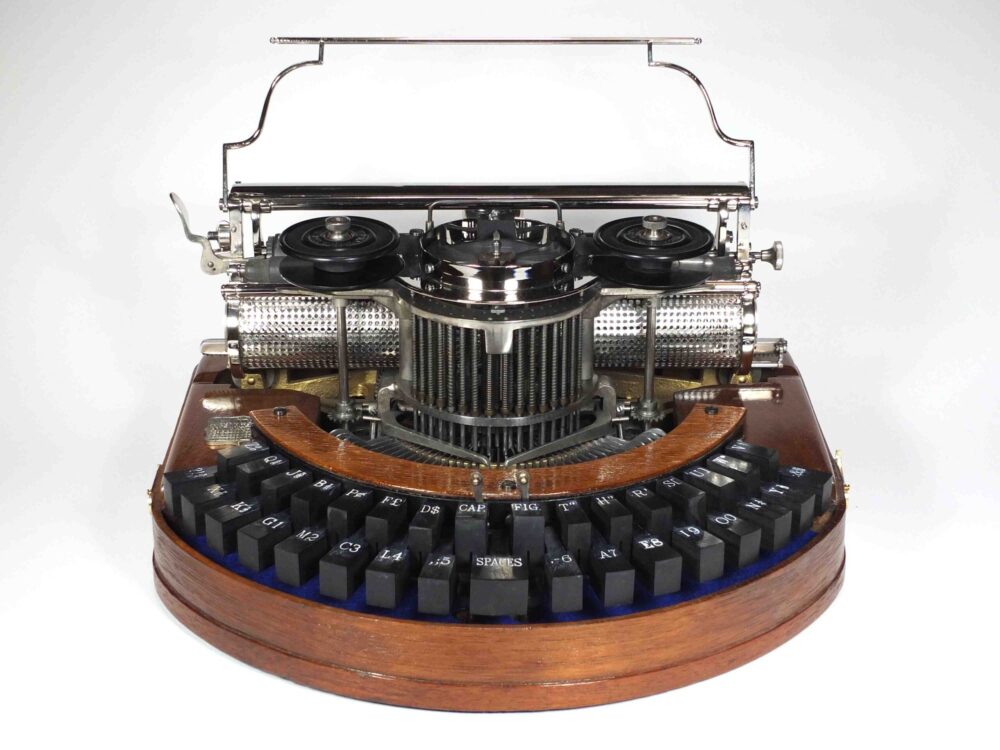
The No. 1 started it all. Patented over multiple patents the No. 1 was the only machine to be built inside of a wooden cabinet. It was James Hammond’s intentions that the machine be operated as one would play the piano, hence the large ebony keys.

Beginning with a curved veneer lid, the frame is basically the same shape that we’ll see throughout the company’s history. Note the wide and tall curve in the front to accommodate two rows of keys.

The machine sat inside of this wooden cabinet, made of walnut, oak, or mahogany, on a layer of green or blue felt.

The No. 1 is distinct not only for its ebony piano keys but also for the separate shroud around the center column of type pins. The wooden deck was another feature of the No. 1, later with a cutout to see the keys keybars inside.

Lewis Carrol’s beautifully restored Hammond 1 with its modified deck to hold type shuttles.

The Hammond 1 was a work of art and further development of the Hammond line would show a slow withdrawal from the artistic and aesthetic, and more towards the functional. The nickel plated eraser board and three-piece paper stay were also features of the No. 1 that would disappear in the coming years.
The machine also depended on a split shuttle design supported by a series of splines in an arc. The movement of these two pieces and its very design caused many problems in breaking, and longevity. As such, split shuttles today are very rare.


The Hammond No. 1 used a different keyboard layout than other typewriters of the time.
